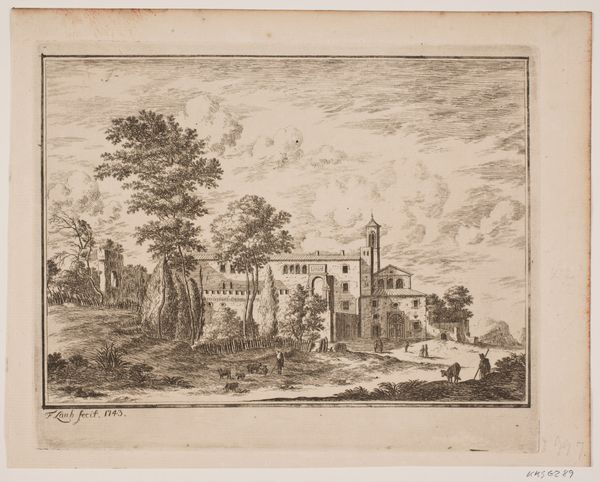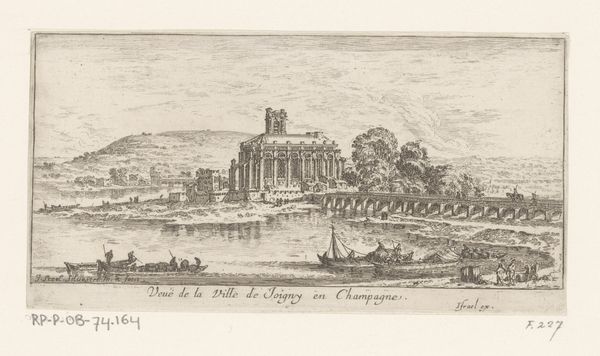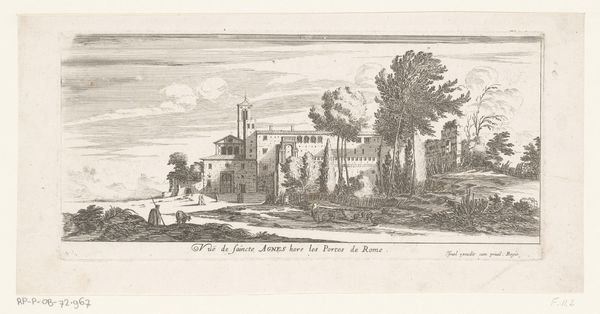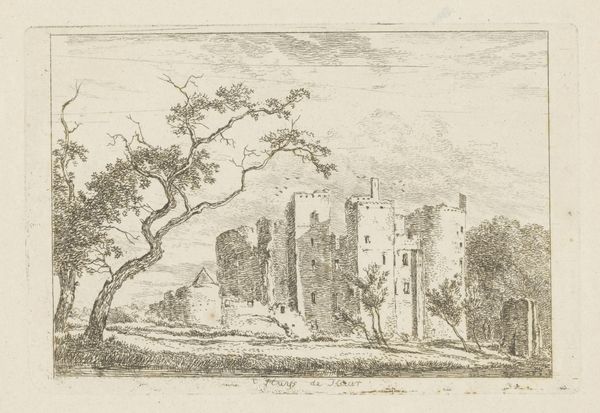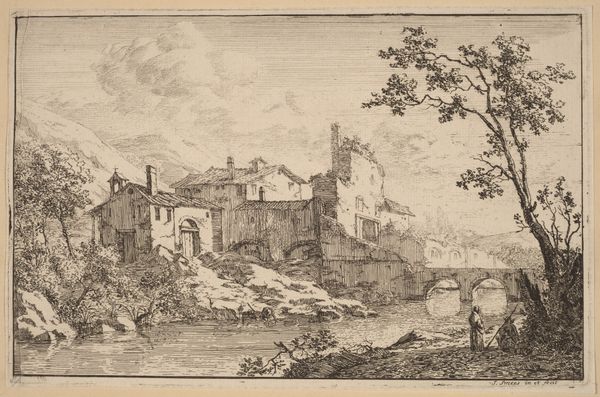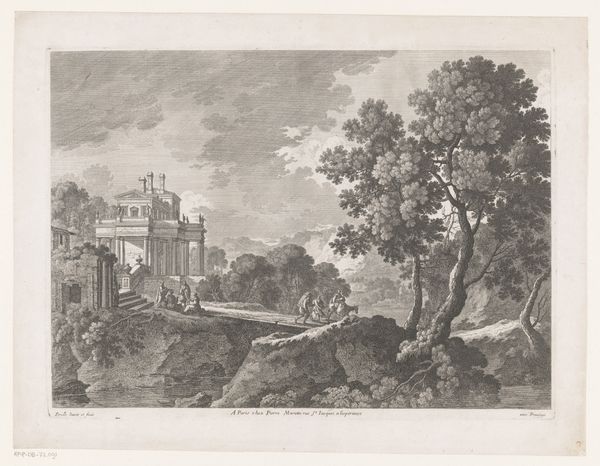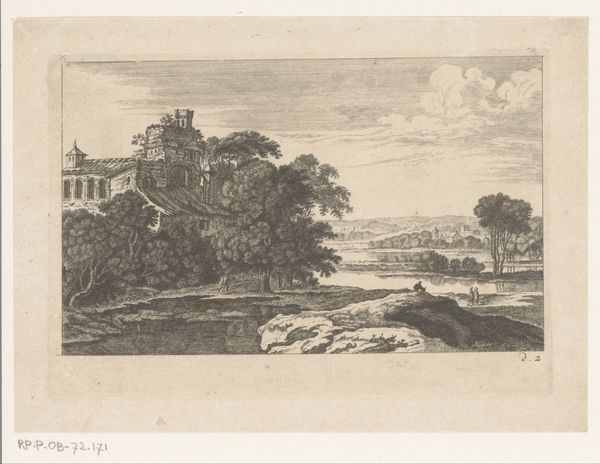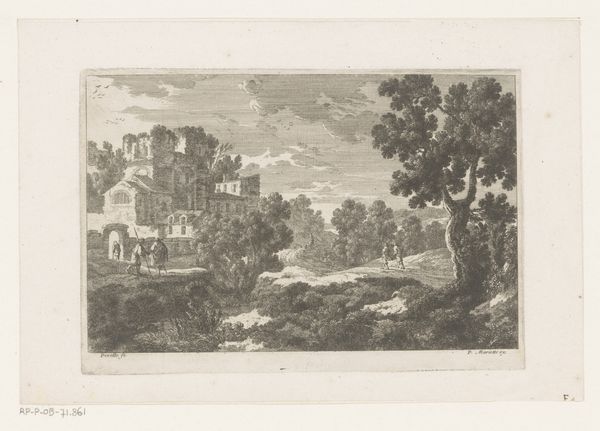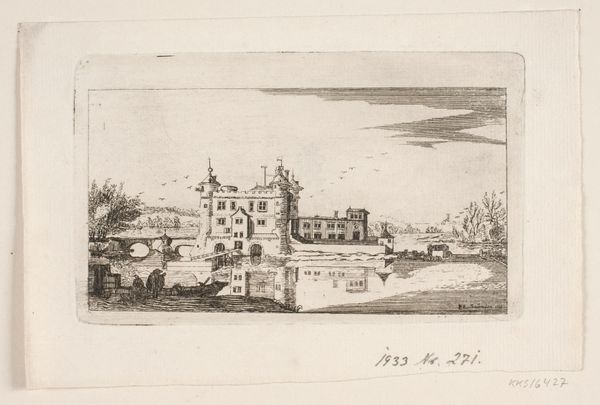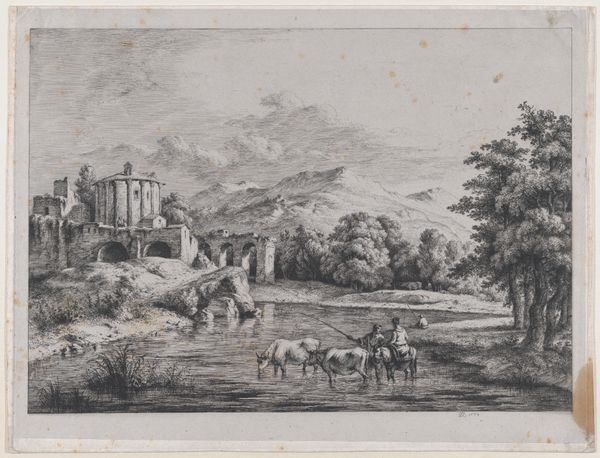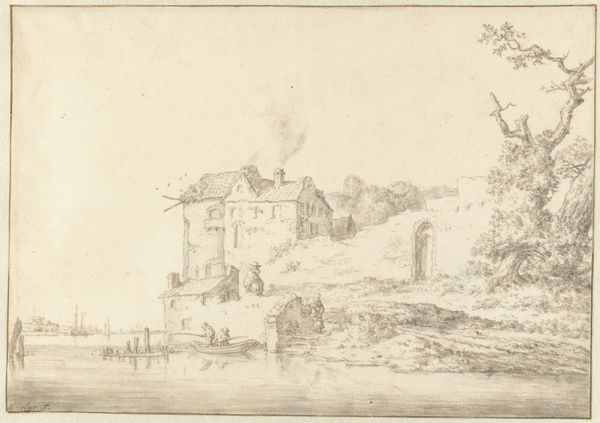
print, etching
#
baroque
# print
#
etching
#
landscape
#
cityscape
Dimensions: height 102 mm, width 155 mm
Copyright: Rijks Museum: Open Domain
Curator: Philothée François Duflos created this etching, "Roman Villa on a River," around 1748. The cool grey of the print contrasts with what I imagine would have been the golden sunlight of Italy. What are your first thoughts on it? Editor: My immediate reaction is how diligently and deliberately the architecture dominates the organic forms surrounding it. All those horizontal lines defining form give a feeling of great control and containment. I wonder about the paper and ink used in the printmaking process. Curator: The cool restraint suits the subject. Think of Rome as a symbolic landscape during that period. Those precise lines evoke the idealized visions of antiquity sought during the Grand Tour. What is it about the architectural details that draw your eye? Editor: The meticulous representation of the Roman villa interests me in the context of baroque-era labor. Etching was itself a time-consuming process, indicative of a patient artistic ethos. I wonder who this print was commissioned for and where it was eventually traded. What sort of exchange value did the image carry for its commissioners? Curator: Excellent questions. The print's availability allowed for the wider circulation of a certain Roman aesthetic and a shared visual language of power and cultural pedigree. Take a look at how Duflos included staffage within the work too; these diminutive figures help underscore a familiar cultural and social dynamic from the period, emphasizing that the land and leisure are only accessible through extensive and largely invisible material labor. Editor: The staffage as markers of social order…absolutely! I was thinking about the very obvious religious symbolism of ascending heights present. Consider the cultural continuity suggested by the placement of the villa atop the hill, mirroring historical foundations, almost akin to the cultural palimpsest we find so fascinating in religious icons across the eras. The villa then, becomes a symbol for layered meanings about place and continuity! Curator: Interesting. I hadn't thought about the spiritual aspects. For me, the practical element dominates because it represents control over a valuable landscape. Ultimately it's not merely a home; the villa embodies a complex hierarchy visible through its very form and representation as a reproducible print object. Editor: Perhaps those interpretations can comfortably coexist; as icons gather many levels of associated meanings throughout the ages and a great symbol can hold myriad possible levels of meaning, not just for the artist but for all peoples who have looked upon it! Curator: A perspective indeed, and now I see what layers an artwork about architectural forms from centuries ago can add to our modern experience and views!
Comments
No comments
Be the first to comment and join the conversation on the ultimate creative platform.
